Jun 24, 2025
Author:Lisa Martinez
Even in situations where they look clean, your cat can have some strange skin problems. Occasionally, the owners of the cats are concerned with the appearance of black spots, pimples, or crusts around the mouth of their pet. Is it feline acne or cat chin mites?
Although both conditions might seem to be very similar initially, they are brought about by different factors, exhibit different symptoms and are treated differently. Being aware of the two helps you care for your cat properly.
In the article, we look at key aspects of cat acne, cat chin mites, and ways to support your cat's health and hygiene with medical treatments and changes at home.
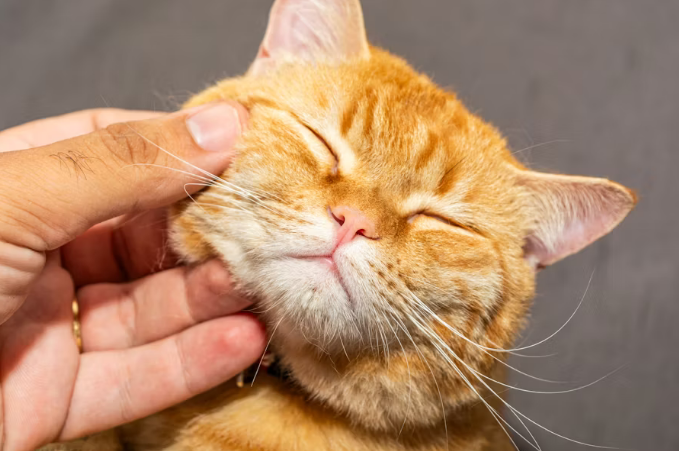
Acne cat chin, sometimes called feline acne, is a typical skin condition that cats can get. In most cases, it appears as small blackheads or bumps on your chin and lips. In more serious cases, the site can develop inflammation, swelling, and infections.
The precise cause of feline acne cat has not been proven, even though a number of aspects may be involved:
● Excessive oil production by sebaceous glands
● Poor grooming habits
● Symptoms come from allergic reactions, usually caused by something in the dish, like plastic, or from outside sources.
● Stress
● Weakened immune system
Some cats experience occasional and short-lived feline chin acne, and others frequently develop it and should be treated regularly. Others like long-haired cats and flat-nosed cats might experience long bouts of flare-ups due to facial folds that trap oil and filth.
When talking about cat chin mites vs acne, it is important to know that chin mites cats are brought on by tiny parasites. Cats are usually hosts to Demodex and Notoedres mites. They enter the skin, make cats feel itchy, cause swelling, and can trigger hair loss.
Symptoms of mites on cat's chin can look very similar to feline acne in the beginning. Even so, there are unique points that need to be noted:
● Itchiness and excessive scratching
● Spots of hairlessness on the chin and face
● Bumps and little flakes on the skin
● Secondary infections
Since the feline acne and the cat chin mites may appear similar, a veterinary professional might be required to conduct a skin scraping test to ascertain certainty. This becomes necessary in order to be sure that the treatment you use would not aggravate the situation.
Treatment works best when the differences between these conditions are well understood.
|
Feature |
Feline Acne |
Cat Chin Mites |
|
Cause |
Blocked pores, bacteria |
Parasitic infestation |
|
Symptoms |
Blackheads, swelling, mild itch |
Crusty skin, intense itch, baldness |
|
Diagnosis |
Visual exam, sometimes biopsy |
Skin scraping under a microscope |
|
Treatment |
Topicals, antibiotics, hygiene |
Parasiticides, medicated shampoos |
Sometimes, neither of the conditions happens alone, adding difficulty to figuring out the treatment. It is important to keep an eye on your cat's skin and see a vet regularly if they have skin problems.
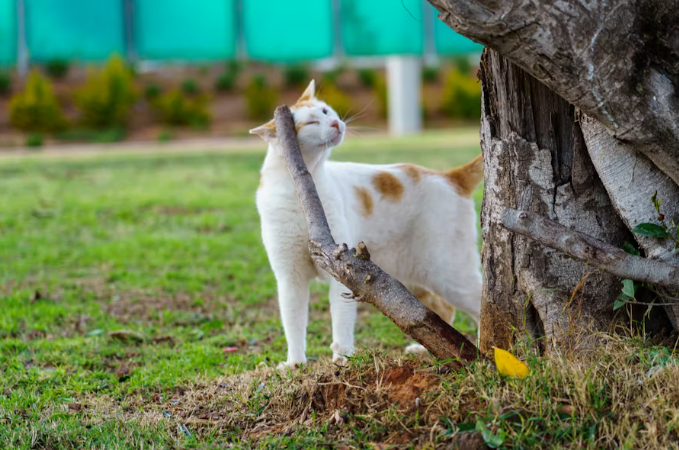
If your vet tells you your cat has feline acne, it's necessary to put in place a solid cat acne treatment regimen to stop further incidents.
Gently wipe your cat's chin using a cleaner or wipes made by your vet about one or two times each day. This action keeps oil and bacteria from remaining on your skin. Care for your skin by being gentle, because scrubbing hard can only hurt sensitive areas and increase the problem.
After you wash them, plastic bowls can hold bacteria. Selecting either stainless steel or ceramic plates for dinnerware makes both cleaning and disinfecting your kitchen items much easier. You can select the WOPet Ceramic Wireless Pet Water Fountain.
Because it is made from non-porous material, it is safe, and since drinking more water improves the skin, it helps take care of your skin internally and externally. With many pets attracted to running water, a cat fountain is both useful and fun for your pet.
Your vet could suggest using either topical antiseptics or antibiotics. If the infection has affected the oral cavity, oral medicines may be necessary. You might be told to use shampoos specially made for cats with skin problems.
If it looks like allergies are the problem, let your vet help you recognize the special allergens and eliminate them. Changing the type of detergent, cleaner, or litter you buy can sometimes help reduce breaks on the skin.
Cat chin mites are handled differently from other fur parasites. Cat chin mites treatment often consists of:
Your vet may provide prescription dips, spot-on medicines, or oral treatments to get rid of mites. Usually, these treatments are done several times within a few weeks, so every stage of pest development is destroyed.
Itching normally accompanies swollen skin caused by mites on cats chin, so you can use anti-inflammatory medicine or specially made shampoos to ease the itch. Cleaning your pet regularly will also dispose of debris and promote healing.
Properly clean your cat's sleeping places, tools for pets, and all furniture regularly to prevent mites from returning. Several species of mites can survive in their environment for several days or weeks. Always keep your mattress wrapped, vacuum your bedroom regularly, and wash the soft items using hot water to repel invasive insects.
A diet rich in nutrients and giving your cat enough water may help their skin heal more quickly. With the WOpet Heritage View Automatic Pet Feeder with Camera [Dual Bowls], your cat can always eat on time, and you can monitor them—and look for any issues—through the camera, even while you're not home.
Routine cases of feline acne or cat chin mites may be controlled at home; however, some require help from a veterinarian. You should be aware if your cat's condition moves past just being a bit unhappy.
Get in touch with your vet if these things happen:
● An inflamed or swollen area that doesn't go away in a week
● Open sores or bleeding on the chin
● You'll find that your pet often rubs their chin against furniture or hard objects.
● A sudden increase in hair loss or bald patches
● Pain in the chin when touched
● A secondary infection might be indicated by the presence of pus, bad odor, or crustiness.
Any of these warning symptoms may indicate that the situation has gotten even worse than before, or there is a complication such as fungal infection, allergy, or any other severe skin disease occurring. The differences between these conditions have to be understood well so that treatment works.
If your cat's symptoms don't improve with the acne treatment, it could be possible that you're dealing with mites on cats chin, or maybe even have both problems. A vet is the only one who can correctly identify the disease and determine the appropriate drugs.
Taking immediate action as advised by a vet will avoid diseases and make your cat happy. By deferring the visit, you might need sterner treatment or more time to heal. Whenever you are convinced that your pet is not doing well, always opt to visit a vet.
Drinking enough water is very important for both feline acne treatment and cat chin mites treatment. When a cat is well hydrated, the skin is less rigid, the barrier system maintains itself, and recovery of wounds is accelerated. Dry or dehydrated skin is predisposed to being irritated and developing flakes and experiencing new infections..
Making sure your cat stays hydrated is one of the easiest and least considered ways to maintain your pet's skin. Most cats enjoy running water, and the WOPet Ceramic Wireless Pet Water Fountain helps keep the water your pet drinks fresh.
A lack of water can become a problem for many elderly cats. You can learn more about caring for your aging cat with this how-to article about hydration and health. Lots of water is a significant factor in skin health and assists your muscles in healing more effectively.
Prevention will ensure that cases of feline acne and cat chin mites do not recur once the skin condition of your cat has improved.
Clean your cat's chin after you finish feeding it. Clean their dishes daily and avoid presenting them with plastic materials. Frequent brushing of your pet will keep her coat intact and also prevent deposits of undesirable dirt and greasiness..
Many skin problems are symptoms of more serious issues, such as immune weakness or an allergy. Vet check-ups in routine can recognize pet health problems and prevent them from getting worse.
Making sure your cat doesn't have fleas or mites should be something you do regularly. Often, when your pet gets mite or flea infestations, the two kinds of parasites can both get worse together. If you're trying to learn how to look after your cat and fleas, check out this blog about detecting, treating, and avoiding fleas on cats.
Doctors explain that stress may weaken your cat's immunity, allowing the cat and parasites to get an easier foothold. Having these items will probably help your pet stay happy and healthy. Setting up a regular and dependable environment for your cat is good for their brain and body.
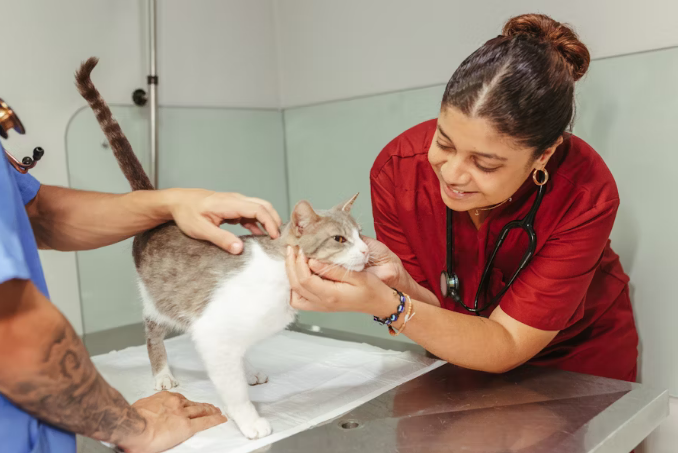
Cat chin acne, feline chin acne, and cat chin mites may be prent in numerous pets; however, their neglect is not an option.
They can cause significant discomfort, and when untreated, they can even bring more severe issues. Early detection of issues and committing to offering equal care to your cat on a daily basis can also make your pet happier.
Things like WOPet's fountains and automatic feeders guarantee your pet stays hydrated and clean, which helps keep the skin healthy. When you recognize the causes for cat chin mites vs acne, you can give your cat targeted help and fast relief.
If your cat's chin is damaged by acne cat chin, or more persistent chin mites, you need to be active and make good lifestyle choices for the best outcomes.
Label:
Popular Post
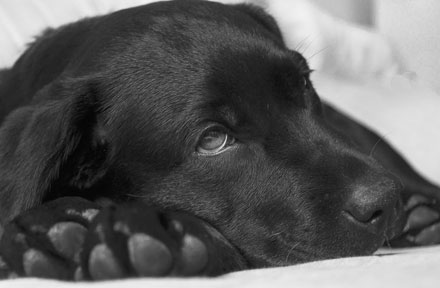
What to Feed a Sick Dog With No Appetite? [2025 Guide]
May 16, 2023
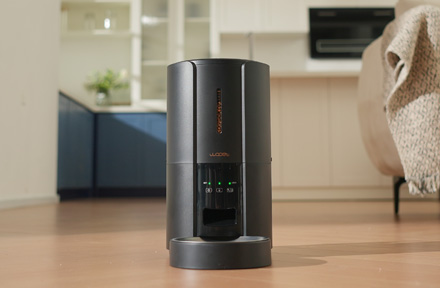
Troubleshooting Common Issues with Automatic Pet Feeders: Tips & Tricks for Pet Owners
Oct 26, 2023
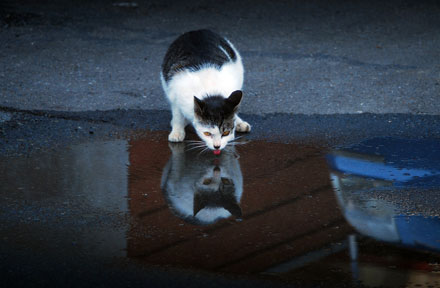
Why Does My Cat Cough After Drinking Water? 8 Potential Reasons
Mar 13, 2023
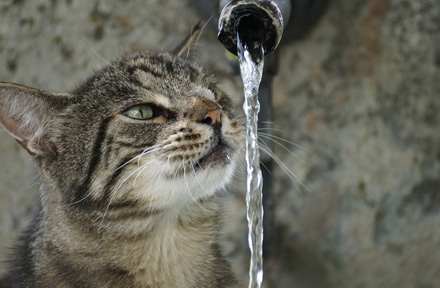
Why is My Cat Throwing up Water? Top 5 Causes Here
Feb 08, 2023
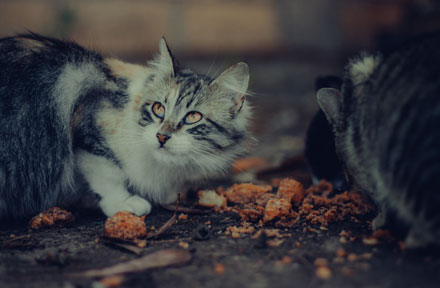
My Cat Only Eats A Little at A Time - What to Do?
Feb 27, 2023
$99.99
$129.99
Copyright © 2025 WOPET. All Rights Reserved.